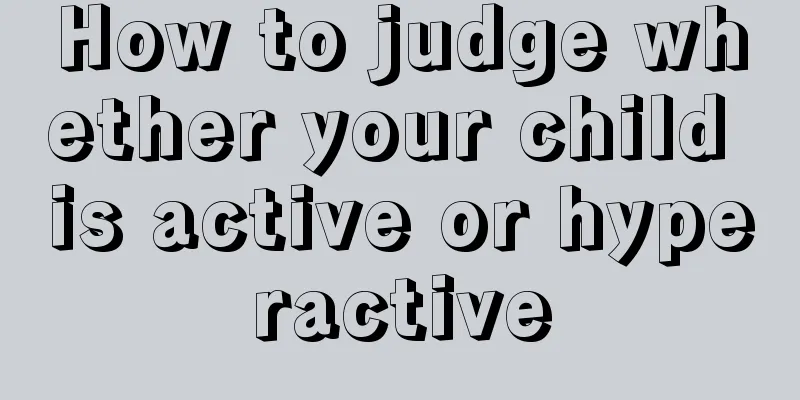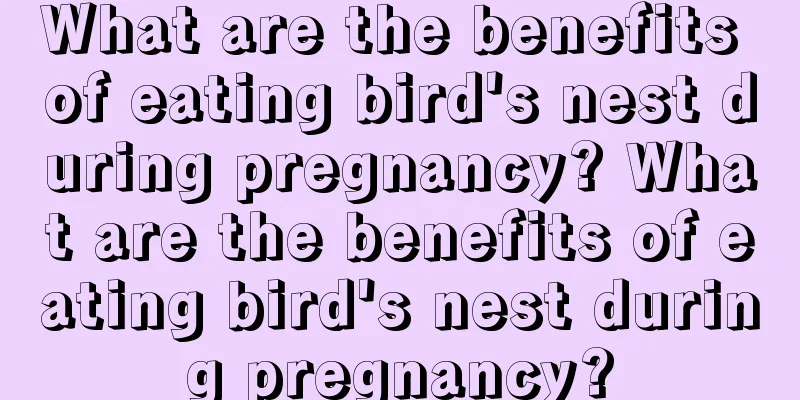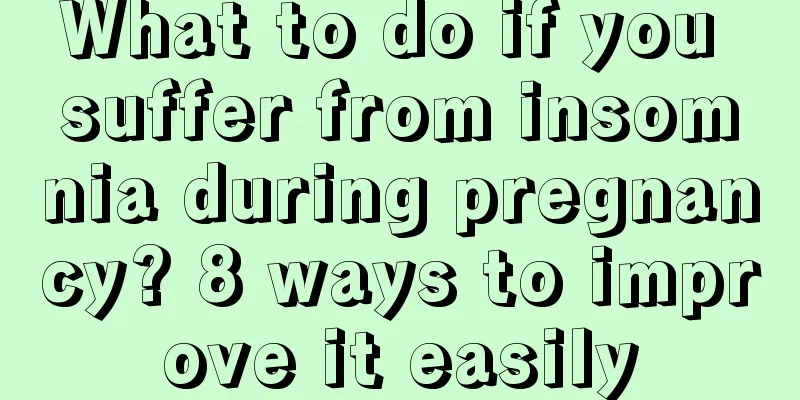How to judge whether your child is active or hyperactive

|
Children are undoubtedly the center of our family. When children have problems, the whole family will be very worried. Although ADHD in children during their growth stage has no direct health impact on children, it is very detrimental to their growth. How to judge whether a child is lively or hyperactive? And how to treat ADHD? Behavior patterns and characteristics of hyperactive childrenThe behavioral patterns of ADHD children often cause many interpersonal problems. They may be excluded and unable to maintain good interactions with others, or unable to establish long-term and stable intimate relationships with others. In the long run, they become frustrated, easily depressed, often have negative emotions, and develop many psychological and mental problems. Three characteristics of hyperactive behaviorFeature 1 - Lack of attentionThey are unable to concentrate on completing a task or a game. For example, they do not pay attention in class and are immediately distracted by noise or stimulation. They also procrastinate on doing homework and often forget what they should do or what they need to bring. They are also often careless and prone to making mistakes. They also have difficulty staying focused on a task or activity. For example, when playing with toys, they only play with each toy for a few minutes before their attention is diverted. Feature 2: HyperactivityAt any time and in any occasion, their hands and feet are always moving around, climbing up and down, and it is difficult to calm down; they also talk a lot, etc. For example, whether crossing the road or on the sofa, they are always jumping up and down, with endless energy. They cannot sit still in a chair, either moving their hands and feet, twisting their bodies, or fidgeting, disturbing others, or running around, jumping up and down. In severe cases, they cannot calm down, cannot engage in static activities, and will leave their seats during class. TRAIT 3: IMPULSIVEOften act without thinking, without considering whether it is appropriate or dangerous, and just do what they want to do, such as rushing to speak or interrupting, constantly interrupting others, unable to wait in line, suddenly touching others, taking other people's belongings without permission, or climbing to dangerous places. Art therapy assistanceIn addition to drug therapy, art therapy is also a combined auxiliary therapy for ADHD children, which can achieve a complementary effect. American art therapist Diane SteinSafran has more than 20 years of experience in applying art therapy to ADHD children. In her book Art Therapy and AD/HD, she describes very practically how to help children increase their concentration, improve their self-esteem, fight impulses, and increase social interpersonal skills through an eight-week art therapy sharing group.The biggest challenge for ADHD children is psychological and emotional problems. In addition to their own impulsivity, sensitivity, anger, worry, anxiety and depression, they also have to face strange looks from the outside world, being excluded and labeled, etc. In the process of art therapy, through the observation and guidance of art therapists, parents can understand the psychological state of ADHD children and help children build stable emotions to face physical obstacles.1/Benefits: In the non-threatening art therapy room, ADHD children can express and soothe their inner emotions and stabilize their impulsive behaviors through creation in this stress-free space.2/ Application: Release negative emotions through different artistic media (such as painting, games, graffiti, etc.), and stabilize impulsive behavior through free creation without dogma.3/ Method: In addition to one-on-one, there are also one-to-many small groups that encourage sharing and discussion, so that ADHD children can learn to get along well with others, improve interpersonal relationships, and establish the concept of abiding by rules.4/Method: Art therapy will use different media and methods according to the different stages and conditions of the ADHD children.5/Effectiveness: Allow children to have a sense of satisfaction and accomplishment, thereby enhancing their self-confidence, and at the same time training their concentration during the creative process.ADHD symptom assessment1. Failure to notice small details or carelessness that leads to mistakes in schoolwork, work, or other activities.2. Unable to sustain attention during work or play activities.3. Doesn’t seem to be listening when others are talking to you.4. Unable to complete tasks assigned by teachers or parents, including schoolwork, housework, etc. (Not defiant behavior or inability to complete the assigned tasks due to lack of understanding)5. Lack of organizational skills.6. Often avoids, dislikes, or refuses to participate in tasks that require sustained mental effort, such as school work or homework.7. Easily lose or forget things needed for work or games, such as toys, pencils, books, etc.8. Easily attracted by external stimuli.9. Tends to forget daily routine activities and needs frequent reminders from adults.Hyperactivity and impulsive symptoms1. Unable to sit still in the seat and twists the body around.2. Often leaves seat in class and cannot sit still.3. Inappropriate running, jumping, and climbing in the classroom or activity environment.4. Unable to participate in games and leisure activities quietly.5. Moving constantly (much like a running motor).6. Talk a lot (talk frequently and continuously).7. Answer questions before all questions are asked.8. Unable to wait for turns (unable to wait patiently in places where turns are required).9. Frequently interrupting or disturbing others, such as interrupting other people’s games.Note: According to the clinical diagnostic criteria of the American Psychiatric Association's DSM-IV, the above two assessments are scored separately. If at least six of the nine items in a single assessment are present and persist for six months or more, it is recommended that the child go to the child psychiatry outpatient clinic for further diagnosis.Assistance from civil society groupsWhat is the approximate proportion of children with ADHD? Zhu Yushui said: "For Taiwan's school-age children, about 1 to 3 out of 50 are diagnosed as ADHD." The general public should treat these children with a normal attitude and avoid negative attacks and labeling. Currently, many schools have set up "resource classes" and "special education classes" to provide ADHD children with a unique way of education. In addition, there are also social welfare groups and art therapy associations in the private sector that provide necessary assistance to ADHD children. Parents with ADHD children can make use of them. Parents’ attitude and supportIf there is a hyperactive child at home, I believe that both the child and the parents are under great pressure, and they also feel tired and frustrated physically and mentally. How should parents deal with and start to educate their children? Zhu Yushui said: "Parents should first understand and accept hyperactive children, adjust their mentality, and then learn how to deal with it objectively."1. Seek assistance from a hospital specialist.2. Give more tolerance and encouragement in life, and avoid blame and corporal punishment.3. Set simple rules, and let children understand the importance of following the rules through consistent attitude and firm teaching by parents every time.4. Positive reinforcement practices, such as giving smiley face stickers, compliments, etc. to replace negative words.5. Allow your ADHD child to choose his or her favorite things or activities at home.6. Provide a simple and clean environment, reduce distractions, train concentration, and improve learning outcomes.Expert Explanation Art TherapistExamples:I once counseled a 5-year-old child who had ADHD and was diagnosed with autism by a doctor. He had no language ability. Because his mother was under excessive pressure, she was particularly strict with him, which made the child extremely anxious. analyze:During the 20-week art therapy, the child did find a way to express himself beyond the limitations of language. He was able to express his inner fear and negative emotions through visual creation. However, due to his mother’s reasons, the child was forced to stop the treatment. Zhu Yushui also emphasized: “Parents’ attitudes and practices actually play a very important role for hyperactive children.” Tips from the therapist:The attitude of the family is the source of the sense of security for hyperactive children. In the development psychology of children, their needs are universal. Hyperactive children should be treated the same as other children. They need the tolerance of their parents in the process of growing up. In this way, we can avoid a tense relationship with hyperactive children and reduce the pressure on both sides. |
<<: What are the symptoms of baby's food accumulation? Four phenomena should be watched out for
Recommend
When can parents take their babies to participate in outdoor activities? What is the best time for babies to exercise outdoors?
Spring has arrived, everything is revived, the we...
What to do if you have diarrhea during pregnancy? Does diarrhea during pregnancy affect the fetus?
Diarrhea is a very common physical phenomenon. Th...
What factors will affect your baby's vision? 8 factors to pay attention to
Eyes are the windows to the soul and need our goo...
What are the symptoms of baby getting angry? See how to care for it with Chinese and Western medicine
Maybe one day you suddenly find out why your baby...
How to distinguish the authenticity of Wyeth Qifu Yunchun milk powder? What is the difference between Qifu Yunchun and Qifu?
The first mouthful of milk powder for a baby is p...
Can I drink goat milk powder every day? Is it bad to drink goat milk for a long time?
Goat milk powder is a very common product on the ...
Can you still drink moldy tea? How to deal with moldy tea?
If you find that the tea leaves stored at home ar...
Can artificial insemination be used to select the sex of the fetus? Is artificial insemination safe?
Artificial insemination is a method of human inte...
Can I get the COVID-19 vaccine during pregnancy? Can I get the HPV vaccine during pregnancy?
Recently, the COVID-19 vaccine has been developed...
Does yellow fever vaccination affect pregnancy?
Recently, the first case of yellow fever was foun...
How to prepare the dipping sauce for boiled shrimp How to make boiled shrimp for babies
Boiled shrimp is a kind of shrimp cooked in boili...
Is the doula labor analgesia device useful? Is a doula labor necessary?
Doula delivery is a new medical method to relieve...
Can children eat snake fruit? Can children eat snake fruit?
Snake apple is an imported apple with rich color,...
Can I eat a rotten pear? What will happen if I eat a rotten pear?
Pears are a very popular fruit because they are v...
How to stop feeding the baby at night without pain? How to stop feeding the baby at night?
How to stop feeding your baby at night without pa...









